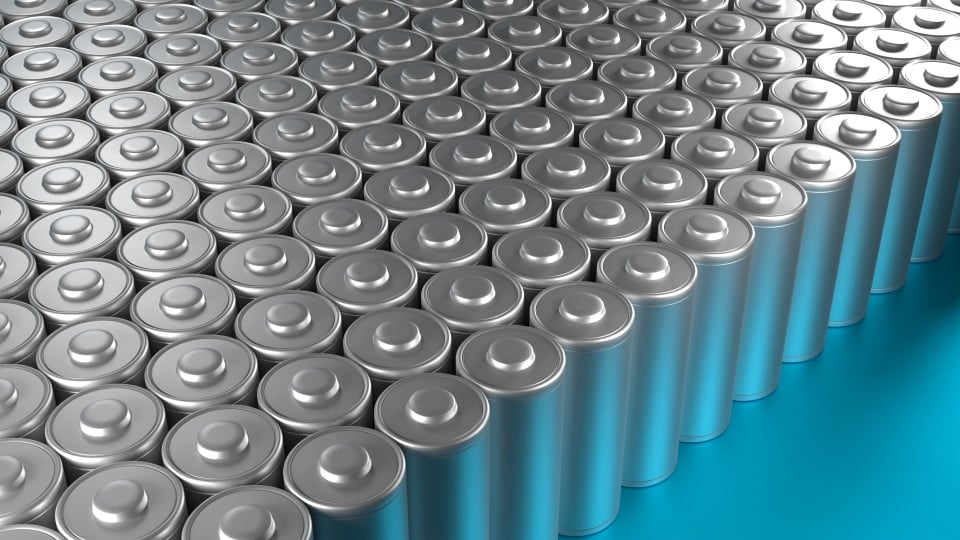From 1st January 2019, China’s Ministry of Finance - in an unexpected policy shift - has removed all potash export tariffs with major implications for the potassium sulphate (SOP) market in particular.
The removal of the trade barrier between 6.6 Mt/y of generally low-cost Chinese capacity and a world market enjoying premium SOP prices will cause major concern for international producers and projects alike. The surprise move will undoubtedly have a profound impact on the global market. However, while it will inevitably increase global competition in the SOP market, we expect that the unique supply and demand dynamics in the SOP market will buffer the impact on international suppliers.
The policy shift will have a profound impact on the SOP market
China may be best-known in the fertilizer industry for the transformational impact it has had in phosphate fertilizer market in the last 20 years. That market has demonstrated the effects of runaway investment in production capacity and the subsequent tipping of the equilibrium in a market the size of China can have on the global economy. The spill-over effect in the form of high volumes of fertilizer exports has dragged prices lower, particularly in the last five years. A similar scenario has also played out in the urea market in recent years, with large volumes of Chinese exports keeping international prices low.
Historically import-dependent for potassium fertilizers, China’s deficit in potassium resources has limited possibilities of a repeat in potash markets. China will remain import-dependent for supply of potassium chloride (MOP) which accounts for approximately 90% of the global potassium fertilizer market. December’s announcement will have a limited impact on this segment of the market. However, the move will have profound consequences on the Chinese and global SOP markets (estimated by CRU at 4.3 Mt and 7.0 Mt in 2018 respectively).
The rapid development of the SOP industry in China in the last ten years led to the establishment of the world’s largest and some of its lowest-cost SOP producers. Since then, Chinese SOP exports have been limited by the export tariff since which was intended to limit the exportation and depletion of strategically important national potassium resources. Its removal has therefore come as a surprise to many industry observers and may lead to a more established export pattern of SOP from China into international markets. While this will fundamentally transform the mechanics of the global SOP market, we do not expect that this represents a doomsday for international SOP producers.
Removing barriers to trade on 60% of global capacity will cause concern in this premium market
China is both the world’s largest producer and consumer of SOP, demanded by growers of high value chloride-sensitive crops both for its potassium content and its low chloride content. Both characteristics facilitate a price premium in world markets above MOP which is high in chloride. Until now, having been largely isolated from the international market by the potash export tariff, the Chinese policy move will lift a major barrier between the world’s largest market and the Rest-of-World market.
The Chinese SOP industry has grown rapidly in the last ten years, triggered by major supply additions commencing in 2009. Investment has since continued apace in the industry. Between 2013 and 2018 alone Chinese capacity almost doubled from around 3.4Mt/y to 6.6 Mt/y, now representing 60% of current global capacity.
The Chinese agricultural sector was initially quick to absorb the domestic supply additions. CRU Consulting research confirms that the country’s agronomic profile is heavily supportive to SOP consumption; widespread cultivation of chloride-sensitive vegetables, fruit, nuts, tea and tobacco means that Chinese growers place a high value on low-chloride forms of potash including SOP.
Improved access to new local supply and initially lower prices unlocked extensive latent demand for SOP in China. Many growers had been reliant on MOP or very limited use of potassium, both of which represent sub-optimal alternatives for growers of chloride-sensitive crops. Chinese demand reacted to the increased availability by expanding rapidly, with consumption growing at a compound annual rate of 19% from 2010 to peak at 4.2 Mt in 2016.
Despite initial robust domestic SOP demand growth, more recently demand has been unable to keep pace with capacity additions. This has resulted in utilisation rates falling below 60% among secondary SOP producers for the past two years. Now without a tariff barrier to higher price international markets, the magnitude of the excess capacity in China is viewed as a potential threat by international suppliers.
SOP’s unique supply structure means integration between the Chinese and Rest-of-World markets will not be straightforward
An understanding of the unique supply structure of the SOP market will be critical to forecasting the market impact of the removal of export tariffs. China produces SOP through both “primary” and “secondary” routes. Primary production creates SOP from minerals extracted from natural brines. Secondary processing chemically synthesises SOP from MOP feedstock and sulphuric acid (most commonly) – the “Mannheim process” – or ammonium sulphate through “sulphate-exchange”, yielding a hydrochloric acid or ammonium chloride by-product.
Primary production takes place in the remote western provinces of Xinjiang and Qinghai at abundant salt lakes or “playa”. SDIC Luobupo, at the Lop Nor playa in Xinjiang, is the world’s largest SOP producer with a capacity of 1.8 Mt/y, and accounts for more than 15% of the world total. The two provinces host a combined primary SOP capacity of 3.2 Mt/y in 2018, almost half of China’s total. They represent the world’s lowest-cost SOP producers according to CRU’s global SOP cost analysis.
Secondary capacity is distributed widely throughout the country with Shandong and Hebei provinces containing the highest concentration. Together, they host just over 1.0 Mt/y – about one third – of China’s total secondary SOP capacity. Unlike primary producers, secondary producers are not bound by the location of natural resources. Consequently, they strategically place themselves close to key raw material sources (which for Mannheim producers are potassium chloride (MOP) and sulphuric acid) or adjacent to major SOP demand centres. Many Chinese Mannheim producers are located in industrial coastal regions where they can access imported MOP and find customers for the hydrochloric acid which is produced as a necessary by-product through the Mannheim process. Failure to manage hydrochloric acid output can itself cause temporary shut-downs when storage has reached capacity.
MOP feedstock represents the single biggest operating cost for Mannheim SOP producers. As a result, the margin between MOP and SOP prices is critically important to the economics of a Mannheim plant, exposing producers to relative price fluctuations. While a high SOP price relative to MOP can signal healthy margins for producers, the opposite can lead to temporary shut-downs. Such shut-downs remove supply from the market, thereby altering the market balance and supporting an SOP price recovery. In this sense, the economics of Mannheim producers can act as a self-correcting pressure valve between SOP and MOP prices; they will also be critical in determining how the Chinese market responds to the market shock of the abolition of tariffs.
China’s role as the marginal supplier of SOP may now be relegated to the past
China’s international trade in SOP has been dwarfed by the total size of its domestic market for many years, signifying the effectiveness in the export tariff in isolating the Chinese market from the rest of the world. Prior to 2014, China was a net importer of SOP, receiving over 100 kt/y SOP between 2010 and 2013. Only negligible volumes of SOP were exported due to strong domestic demand and an export tariff which was so prohibitively high that exports were essentially banned.
In 2014 a surge in domestic capacity coincided with a reduction in SOP export tariffs from RMB 2,000/t (USD 325/t in 2013) to RMB 600/t (USD 89-97/t between 2014 and 2018). However, the export tariff largely succeeded in restricting the surge in China’s domestic SOP capacity from spilling over into export sales and continued to segregate the Chinese and Rest-of-World SOP markets.
China’s SOP import requirement more than halved as a result of the increase in supply. At the same time minor quantities of SOP exports commenced. Typically in the tens of thousands of tonnes (on average <5% global SOP trade), Chinese SOP exports took up the role as the marginal supplier to the international market, exporting volumes only when the gap between domestic and international prices (accounting for the tariff) incentivised them to do so. Entrepreneurial traders also discovered a way to circumvent the tariffs by packaging SOP in 10kg bags which were not subject to the charges, indicative of the market’s intentions in the absence of the tariff.
China’s role as an SOP price-setter will be transformed
In this way, Chinese supply has quietly established itself as the marginal supplier to the global SOP market. Although volumes have been relatively small, the threat of Chinese export supply has played a critically important role as the market’s price-setter.
SOP export prices from Taiwan (a major Mannheim-based exporter) relative to domestic China prices have been a key indicator of the incentive for Chinese suppliers to export. Between Q1 2014 and Q2 2015, this averaged around USD 65/t, well below the approximately USD 96-97/t export tariff (RMB 600/t). Although this premium between FOB Taiwan and domestic Chinese prices increased to an average of USD 77/t between Q3 2016 and Q4 2017, it remained below the export tariff in dollar terms. In 2018, sudden strong growth in domestic Chinese SOP prices sharply reduced the incentive to export and resulting in the lowest export volumes in five years.
According to our analysis, on an average annualised basis, domestic sales of SOP consistently generated higher margins than exports with the RMB 600/t tariff in place. Only in 2016, when domestic and export netbacks neared parity, have exports exceeded 100 kt.
Given the fleeting nature of Chinese SOP export incentives, no major Chinese SOP producer has actively pursued an international market strategy. Instead, export volumes have been a function of SOP traders purchasing SOP on the domestic market and pursuing arbitrage opportunities with international prices. This has occurred extremely rarely in bulk volumes due to the applicability of the export tariff. Instead, traders have purchased domestic SOP, incurred the costs of bagging and palletising relatively small volumes made up of 10kg units.
The abolition of the tariff opens up the opportunity for bulk SOP exports from China and for the first time raises the prospect of Chinese producers actively pursuing market strategies which feature both the domestic and international markets. In this sense China as whole will no longer be marginalised as the swing supplier of SOP in the international market.
The SOP market will need to find a new equilibrium
The removal of the export tariff trade barrier will have the effect of significantly reducing regional SOP price variation as both the Chinese and international markets converge on a new market equilibrium. Where that equilibrium is established will be determined by competitiveness of capacity and responsiveness of demand both inside and outside of China. However, the unique supply and demand features of the SOP market will diminish the scale of the newly-exposed Chinese export threat.
CRU assesses that those low-cost inland ‘primary’ SOP producers are in the most credible position to pursue a sustainable SOP export market strategy. Despite their inland location and rising internal freight costs, CRU’s 2018 data indicates that Xinjiang- and Qinghai-based primary SOP producers can export at a total cost significantly lower than other major international SOP exporters.
Like China’s primary producers, secondary producers have established their infrastructure and business models with a focus on the domestic market. Chinese Mannheim producers, which account for the majority of the secondary SOP capacity in the country, will remain exposed to the fluctuating margin between raw material MOP prices and SOP prices. Their ability to produce will also continue to be constrained by their ability to manage their hydrochloric acid by-product output; these constraints have grown amid China’s tightening enforcement of environmental standards. While these factors will not preclude their ability to export, we expect they will have the effect of marginalising certain higher cost or non-coastal Chinese Mannheim producers as swing suppliers, exporting occasionally to profit from arbitrage opportunities.
In the short term, the removal of the tariff can be expected to have an immediate although relatively moderate impact. Supply constraints from Chinese Mannheim producers had already resulted in sharply higher domestic SOP prices in 2018 which significantly narrowed the gap between domestic and international prices. This will moderate the immediate response compared to what would have been the case in 2017. Combined with robust demand for SOP domestically, both factors should limit the potential for a flood of SOP exports from China.
In the longer term the removal of the tariff will have a profound impact on global SOP market dynamics. The potential diversion of low-cost primary Chinese SOP from the domestic to the export market would naturally shift the domestic market balance. As already mentioned, Chinese SOP demand is robust and underpinned by an agronomic profile highly supportive to SOP consumption. Furthermore, CRU forecasts continued growth in domestic SOP demand which will not be directly affected by the policy change. Therefore, any diversion of primary Chinese supply to international markets will have the effect of raising domestic operating rates. This would place further upward pressure on Chinese prices and in turn raise the attractiveness of the Chinese customer-base to domestic suppliers including secondary producers who may be attracted by higher margins.
Conversely, the opposite can be expected in international markets; some decline in ex-China SOP prices and operating rates should be expected, particularly among export-oriented Mannheim producers. Temporary or partial curtailments of supply from some international secondary producers can also be expected, thereby re-balancing the market towards its new equilibrium.
CRU Consulting has extensive experience delivering bespoke SOP market assignments to individual clients in the areas of strategy and market due diligence. CRU will also be publishing its next Potassium Sulphates and Potassium Nitrate Market Outlook in January 2019. This will include more detailed analysis of the removal of the tariff as well as extensive market data. For more further detail on either service please provide your details via the form below.
















